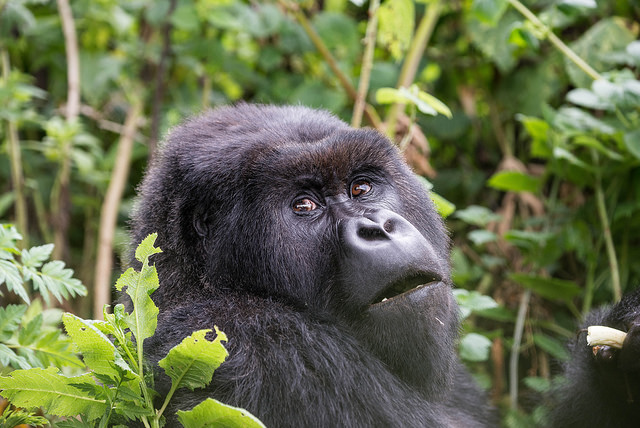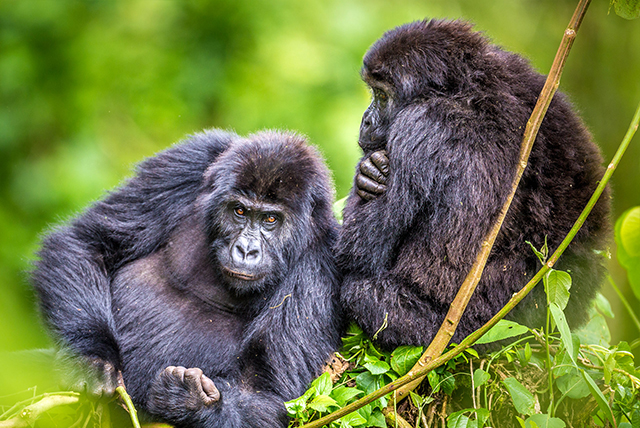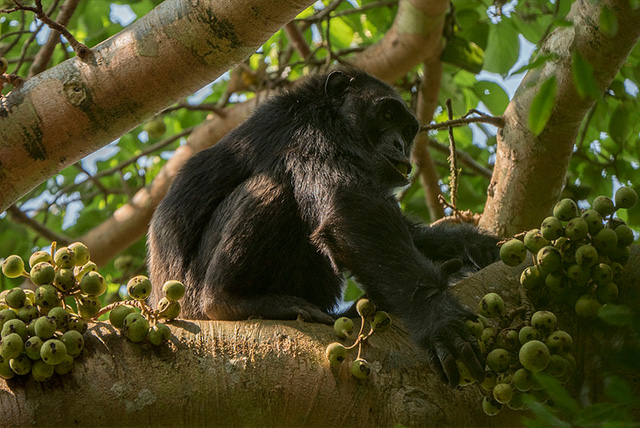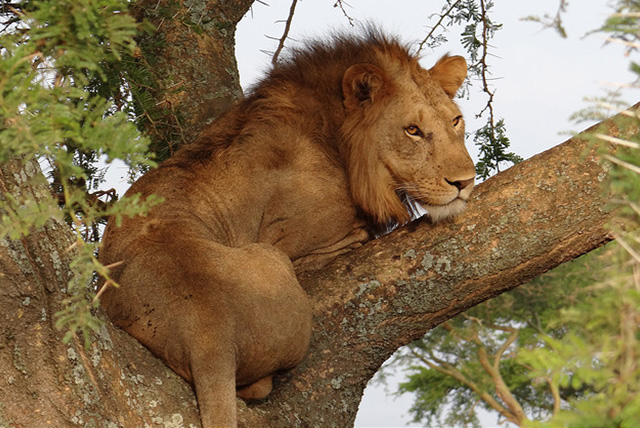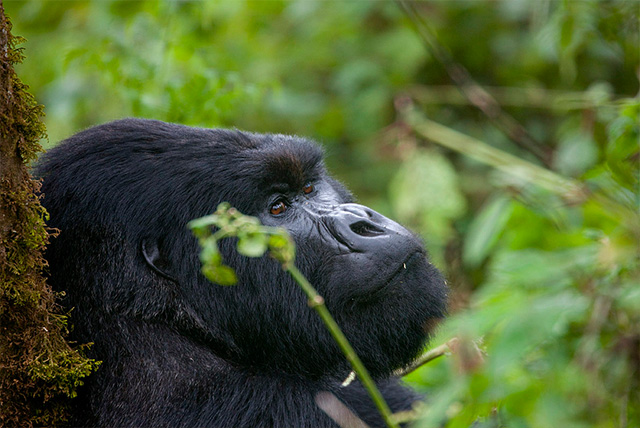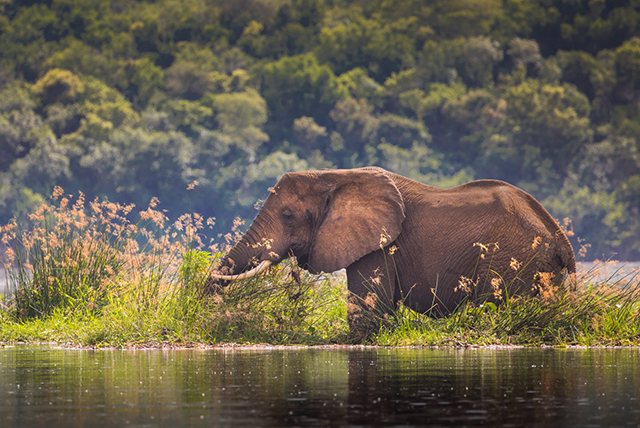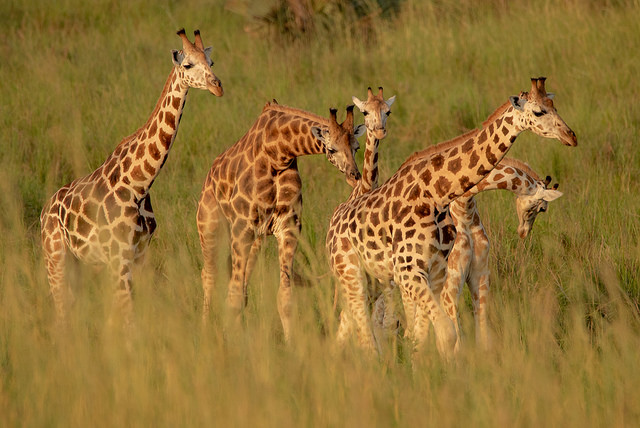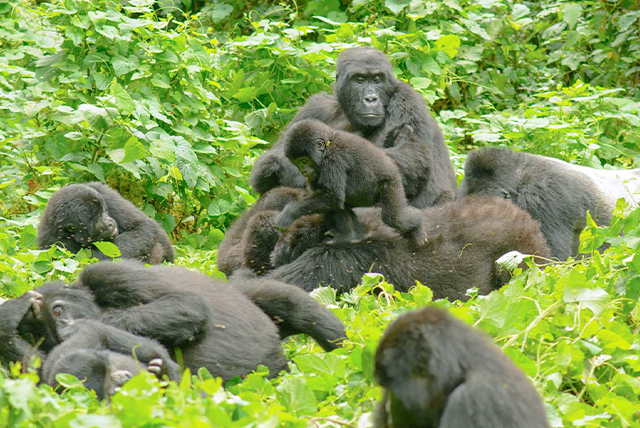Things to Do in Kenya: Activities and Attractions
Check out our list of the top 20 things to do in Kenya, including Maasai Mara, Amboseli, Tsavo, Samburu, Lake Nakuru, Lamu Island, Lake Naivasha, David Sheldrick Wildlife Trust Elephant Nursery, Nairobi National Park, Malindi, Mombasa, Mount Kenya National Park, Hell’s Gate National Park, and Ol Pejeta Conservancy.
Those who have never visited Kenya frequently regard it as a one-trick pony, offering only great safari opportunities. However, East Africa’s most popular travel destination (with about 1.5 million international visitors in 2024) is a multifaceted location with a wide range of rural and urban activities.
Kenya travel Guide
Best Things to Do in Kenya.
Kenya offers magnificent Indian Ocean beaches, world-class mountain hikes, surprisingly good nightlife, a unique cultural legacy, and unconventional transportation options, but wildlife remains the main attraction.
Kenya—the phrase “safari” is practically synonymous with the country. Few places on earth evoke such a sense of adventure and romance as this one. The variety of things to do in Kenya astounds visitors, with witnessing the country’s abundant wildlife at the top of the list. During the Great Migration, behold herds of wildebeest tumble across the grassland in the Maasai Mara; get up close and personal with elephants in Amboseli; or marvel at Lake Nakuru, which is dotted with thousands of flamingos. Ancient tribes like the Maasai, Kikuyu, and Samburu maintain their ancient traditions in these sun-drenched areas, coexisting with nature.
Beyond the world’s famous safari parks, there is a treasure trove of coastal beauties. Discover exotic islands steeped in Swahili heritage, snorkel and dive fish-rich coral reefs, relax on pristine beaches, and enjoy the melting pot of cultures and cuisines in Mombasa and Malindi. Kenya is stunning from a geographical aspect. The Great Rift Valley cuts through the country, bordered by calderas and mountain ranges. To the east of this large valley, the snow-capped equatorial peaks of Mount Kenya can be climbed, and trout can be caught in clear streams.
Hell’s Gate National Park features obsidian caves and hisses, as well as natural geysers and hot springs. Visit Nairobi to experience the romance of Kenya’s colorful colonial history, as shown in the film Out of Africa. This bustling center serves as the gateway to one of the most evocative and exciting tourist destinations on the planet. With this list of the best tourist attractions in Kenya, you may discover even more places to visit in this fascinating country.
20 Things to Do in Kenya: Attractions and Activities
Maasai Mara National Reserve.
The Maasai Mara National Reserve (sometimes spelled “Masai Mara”) is one of Africa’s most stunning game reserves. The Mara is the northern extension of the Serengeti, providing a wildlife corridor between Tanzania and Kenya. It is called after the statuesque, red-cloaked Maasai tribe, who have been grazing their cattle in the park for decades. Mara means “mottled” in their language, which could refer to the play of light and shadow cast by the acacia trees and cloud-strewn skies over the vast plains.
From July to October, the park is famous for the Great Migration, which involves thousands of wildebeest, zebra, and Thomson’s gazelles migrating to and from the Serengeti. Hippos and crocodiles swarm the banks of the Mara River.
Because of its relatively large populations of lion, cheetah, and leopard, the park is well-known for providing spectacular predator sightings, particularly during the dry months of December through February. Because of the park’s height, the weather is mild and pleasant throughout the year.
Amboseli National Reserve
Amboseli National Reserve, capped by Africa’s highest peak, Mount Kilimanjaro, is one of Kenya’s most popular tourist sites. The name “Amboseli” comes from a Maasai expression that meaning “salty dust,” which well describes the park’s dry atmosphere.
The reserve is one of Africa’s best places to get up close and personal with massive elephant herds. The park is home to big cats such as lions and cheetahs, as well as giraffes, impalas, elands, waterbucks, gazelles, and over 600 different bird species.
Visitors can choose from five habitats: the dried-up bed of Lake Amboseli, wetlands with sulfur springs, savannah, or woodlands. Look for Maasai people living in the park’s immediate neighborhood.
Tsavo National Park
Tsavo, Kenya’s largest park, is divided into two sections: Tsavo West and Tsavo East. These parks occupy 4% of the country’s total land area and contain rivers, waterfalls, savannah, volcanic hills, a massive lava-rock plateau, and a wide variety of wildlife.
Tsavo East, located halfway between Nairobi and Mombasa, is famous for its picturesque vistas of enormous elephant herds rolling and bathing in red dust. The park’s palm-fringed Galana River winds through it, providing excellent wildlife watching and a refreshing contrast to the arid plains.
The additional attractions are the Yatta Plateau, the world’s longest lava flow, Mudanda Rock, and the Lugard Falls, which cascade into rapids and crocodile-infested pools.
Tsavo West is wetter and more topographically diverse than the rest of the park, boasting some of the most breathtaking scenery in the park’s northern reaches. Mzima Springs, a series of natural springs with large populations of hippos and crocodiles, Chaimu Crater, an excellent spot to observe birds of prey, and the Ngulia Rhino Sanctuary are among the highlights.
Because of the dense vegetation, wildlife is more difficult to spot in Tsavo West, but the breathtaking scenery more than compensates.
Samburu, Buffalo Springs, and Shaba National Reserve
Samburu, Buffalo Springs, and Shaba Reserves are located in an arid region of northern Kenya, on the banks of the palm-lined Ewaso Nyiro River.
Elsa the lioness, made famous in the film Born Free, grew up in Shaba National Reserve, one of two areas where George and Joy Adamson fostered her.
The fauna in all three reserves depends on the river’s waters to survive, and many species have evolved to thrive in dry conditions. They include Grevy’s zebras, Somali ostriches, and gerenuks, which are long-necked antelopes that stand on two rear legs to reach fresh sprouts on upper tree limbs.
The Sarara Singing Wells, local watering holes where Samburu warriors sing traditional songs while delivering water for their animals to drink, are a popular sight in Samburu National Reserve. There is a potential you will witness large cats and wild canines.
Lake Nakuru National Park
The vast flocks of pink flamingos at Lake Nakuru National Park in central Kenya are well-known. Lake Nakuru, one of the Rift Valley soda lakes that cover approximately one-third of the park’s area, is alive with birds.
Since its founding in 1961, the park has been home to over 450 bird species, as well as a wide variety of other wildlife. Lions, leopards, warthogs, waterbucks, pythons, and white rhinos are among the animals you may see, and the landscape varies from open grasslands around the lake to steep cliffs and woodlands.
The park also has Africa’s largest Euphorbia candelabrum forest. These native, towering, branching succulents lend a dramatic textural element to the dry surroundings.
Lamu Island
Lamu, a little island northeast of Mombasa, has old-world charm. Lamu Old Town, a UNESCO World Heritage Site, is Kenya’s oldest continuously inhabited settlement dating back to the 12th century.
One of the nicest things to do here is to walk around the meandering pathways. The buildings depict the island’s famous trading history. Architectural features from the Arab world, Europe, and India are present, but in a Swahili-style. Wooden doors with elaborate carvings, coral stone cottages, secret courtyards, verandas, and rooftop patios are all popular attractions.
Going sightseeing here is like stepping back in time. Dhows plow the harbor, there are few, if any, powered vehicles, and donkeys continue to dominate the streets as they have for generations. The majority of Lamu’s people are Muslim, and both men and women dress traditionally.
The Lamu Museum, which shows Swahili culture and the region’s maritime history, Lamu Fort, and the Donkey Sanctuary are among the island’s most popular attractions.
If all of the history gets too much for you, take a break on one of the island’s white-sand beaches or sip Arabic coffee at a nearby café.
Lake Naivasha
Lake Naivasha, near the summit of the Great Rift Valley, is a birder’s paradise. There are over 400 species of birds here, including African fish eagles, jacanas, white-fronted bee-eaters, and several kingfisher species.
Boating is one of the most effective ways to watch the wildlife. Hippos splash around in the water, as giraffes, zebras, buffaloes, and elands graze along the lake’s beaches. Keep an eye out for colobus monkeys in the trees.
The Crater Lake Game Sanctuary, near Lake Naivasha, offers a wildlife-rich nature trek.
Hell’s Gate National Park, located just south of Lake Naivasha, protects a variety of wildlife and offers excellent climbing opportunities, including two extinct volcanoes and the red cliffs of Hell’s Gate Gorge.
On the southern edge of Lake Naivasha, the Elsamere Conservation Centre, the former home of Joy Adamson, author of Born Free, and her husband George, is open for tea.
It should be noted that during periods of severe drought, Lake Naivasha has been known to drop dramatically, and the area’s thriving floriculture industry has an impact on water levels and quality. In contrast, the lake is generally green and vibrant.
Nairobi
WALKING NAIROBI STREETS.
Nairobi, Kenya’s capital and largest city, offers a variety of activities besides safaris. Nairobi is recognized for its rich colonial history. It was previously the capital of British East Africa, luring people seeking employment in the coffee and tea sectors. Today, you can explore the city’s well-known historic structures and fantastic animal attractions.
Would you like to visit some of Kenya’s cultural attractions? Nairobi has a variety of interesting places to explore. The Nairobi National Museum is an excellent one-stop shop for exhibitions about Kenya’s history, natural history, culture, and current art. The botanic gardens on the site will also appeal to those with green thumbs.
Another popular tourist attraction is the Karen Blixen Museum, which is a rebuilt home of the famed Danish author of Out of Africa, also known by her pen name Isak Dinesen.
To witness wildlife without having to go far from the city center, go to Nairobi National Park, which is now a black rhino sanctuary as well as a home to many other African creatures.
Nairobi National Park
Who says you need to travel far from Nairobi to have a nice time on safari? Nairobi National Park, only a 15-minute drive from Kenya’s capital, is home to a snoozing pride of lions and a beautiful giraffe wandering across the golden grass.
If you’re in Nairobi, one of the best things to do is visit this wildlife-rich park, which makes for a great day excursion, especially if you can’t make it to one of the larger game reserves.
The typical safari stars include buffalo, leopard, zebras, wildebeest, hippos, elephants, and cheetahs, and the park’s rhino sanctuary is home to some of the world’s most endangered animals.
The Nairobi Safari Walk is a rewarding opportunity to explore wildlife on foot, and birders will be glad to know that the park is home to over 400 different species of birds, including the majestic grey-crowned crane.
A visit to the park would not be complete without a stop at the David Sheldrick Wildlife Trust Elephant Nursery, which is located near the park’s main entrance. Save time to visit the Giraffe Centre, which is located near the famous Giraffe Manor and allows these long-necked beauties to eat directly from your hands.
David Sheldrick Wildlife Trust Elephant Nursery
Who could say no to a lovely baby elephant? At the David Sheldrick Wildlife Trust, you can interact with unimaginably beautiful baby pachyderms while simultaneously supporting a critical conservation cause.
This well-known wildlife refuge rescues and rehabilitates orphaned elephants, and visitors can interact with these adorable creatures. The infant elephants are hand-reared until they are about two or three years old, and the keepers bottle-feed them.
Who could say no to a lovely baby elephant? At the David Sheldrick Wildlife Trust, you can interact with unimaginably beautiful baby pachyderms while simultaneously supporting a critical conservation cause.
This well-known animal refuge rescues and rehabilitates orphaned elephants, and visitors may get up close and personal with these adorable creatures. The infant elephants are hand-reared until they are about two or three years old, and the keepers bottle-feed them.
Malindi
Malindi, on Kenya’s coast north of Mombasa, has two personas. This well-known beach resort combines an ancient old town with a modern tourist appeal. It is also a cultural and culinary melting pot as a result of its lengthy trade history.
Many travelers come from Europe to sunbathe on Watamu Beach’s immaculate sands and dive the coral reefs of Malindi and Watamu Marine National Parks. If you’re looking for free things to do in Kenya, nothing beats a relaxed day at Malindi’s beach.
The old settlement, which dates from the 12th century, also provides a glimpse into Swahili history. The Jami Mosque, two 14th-century pillar tombs, and the Church of St. Francis Xavier, one of East Africa’s oldest churches, may all be located here.
The Vasco De Gama Cross, located atop the promontory, is one of Africa’s oldest standing monuments.
Another famous tourist location is the Falconry of Kenya, which serves as a rehabilitation center for sick and injured birds.
The Marafa Depression, approximately 30 kilometers northeast of Malindi, is also worth seeing. This cluster of sandstone gorges carved by the wind and rain, also known as Hell’s Kitchen or Nyari, is similar to a miniature Grand Canyon.
Mombasa
Mombasa is a major tourist destination with visitors from all over the world. It is also the nation’s second-largest city and harbor. Immigrants from the United Kingdom, Portugal, the Arab world, India, and Asia contribute to the cultural mix, and their influence can be observed in architecture and cuisine.
Mombasa is an island with a causeway, bridges, and ferries that connect it to the mainland’s thriving development. Coral reefs spread for around 480 kilometers down the coast, offering great snorkeling and diving opportunities, particularly in Mombasa Marine National Park and near Wasini Island. Dolphin viewing and deep-sea fishing are popular sports in Mombasa.
Numerous tourist sites may be found along Kenya’s coastline. History buffs will like the 16th-century Fort Jesus and Old Town, which features narrow lanes, antique Swahili residences, markets, and souvenir shops.
Other Mombasa tourist attractions include Mombasa Go-Kart, movies, sports, and a variety of restaurants along the city’s north coast. Beachgoers will find some nice beaches nearby, as this is a coastal hub. The white sands of Shelly, Tiwi, and Diani beaches are popular south of Mombasa, while Nyali and Bamburi beaches are popular north.
Mount Kenya National Park
Mount Kenya National Park, located in the Central Highlands east of the Great Rift Valley, is a UNESCO World Heritage Site that features the unique sight of equatorial snow. At 5,199 meters, it encompasses the country’s eponymous mountain.
Mount Kenya consists of three glacier-covered peaks produced by a series of volcanic eruptions. The highest peak is Batian, while the next highest mountain, Nelion, is more difficult to reach. The lowest mountain, Lenana, is regarded to be the easiest to climb, however the weather can be unpredictable.
Bring a camera with you. The beautiful terrain includes glaciers, lakes, mineral springs, alpine woodland, and dense bamboo pockets.
The diversity of flora and fauna enhances safari experiences. The fauna here includes black and white colobus monkeys, buffalo, elephants, tree hyrax, leopards, and hyenas.
Are you planning to stay here for a few days? The famous Fairmont Mount Kenya Safari Club, hidden in the foothills, is a luxury getaway that offers trout fishing, golf, and tennis.
Hell’s Gate National Park
Hell’s Gate National Park, a renowned climbing location, is one of Kenya’s few parks that allows camping and hiking or biking.
Hell’s Gate Gorge, with its two extinct volcanoes, red cliffs, Obsidian Caves, and Fischer’s Tower, a former volcanic plug, offers good climbing and trekking opportunities.
Geothermal features include hot springs and natural geysers, which emit steam from vents in the earth’s crust. The park protects a variety of wildlife, including leopards, baboons, hartebeest, eland, ostriches, gazelles, and over 100 bird species. The park also has breeding places for eagles and vultures.
The park’s Oloor Karia Maasai Cultural Centre, which showcases Maasai singing, dance, and jewelry-making demonstrations, is well worth a visit.
The Olkaria Geothermal Station is located in Hell’s Gate National Park, which is interesting. It is Africa’s first of its kind, producing energy from heated, pressurized water underground.
Ol Pejeta Conservancy
Ol Pejeta Conservancy, located 200 kilometers north of Nairobi and near Mount Kenya National Park, is an excellent place to observe wildlife up close.
This 90,000-acre private game reserve stresses conservation and sustainability, including the Big Five (lion, leopard, rhino, elephant, and buffalo) as well as other animals such as cheetahs, hyenas, zebras, and hartebeest, all against the breathtaking backdrop of snowcapped Mount Kenya.
The reserve is best-known for its northern and southern white rhinos, as well as Baraka, a blind black rhino who can be fed by lucky visitors.
Self-drive or guided tours are offered to view the animals, and entry includes a visit to the chimp sanctuary. Day visitors are welcome, and if you want to extend your wilderness adventure, there are options ranging from bush camping and safari cottages to a spectacular colonial ranch home where you can stay overnight.

